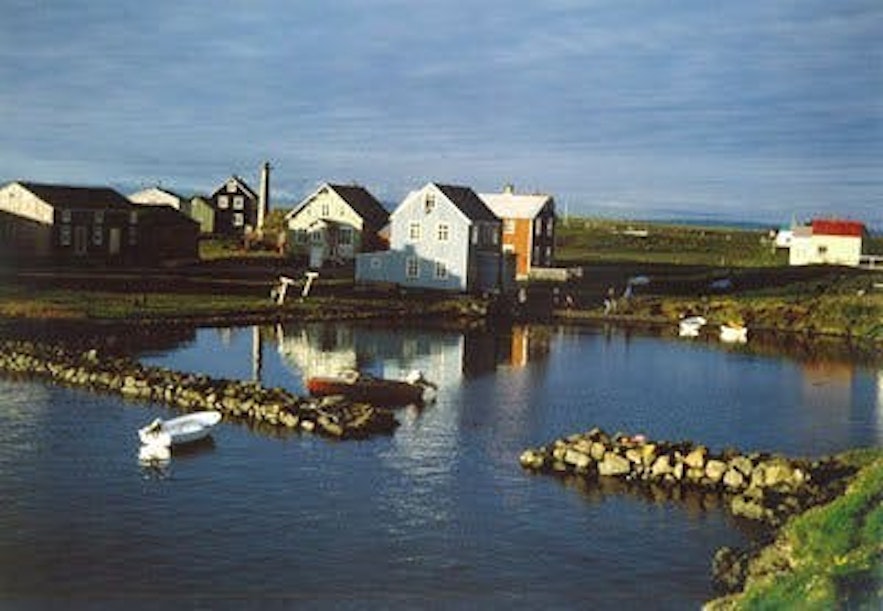History of Flatey Island
The old houses, shops and warehouse buildings on Flatey reflect the optimism and development of the period around 1900. In former times the island was important both as a fishing centre and as the hub of the commercial life of Breiðafjörður fjord.
Traders from the Hanseatic League in Germany ran a trading post here. The first Icelandic trader received a temporary licence in 1589, and in 1777 Flatey received a charter as a town.
The Monastery and Flateyjarbók
For a time in the 12th century there was an Augustinian monastery on Flatey. Later it was closed and the monks moved to Helgafell, near Stykkishólmur, but to this day a stone, Klaustursteinn, in the field by Klausturhólar, is thought to mark its site.
Flateyjarbók, (the Book of Flatey), one of the most important and impressive of the ancient Icelandic saga manuscripts, was preserved on Flatey in the Middle Ages. A photocopy reproduction is on display in the library (the oldest one in Iceland, built in 1864 in the heyday of Flatey’s prosperity.)
The church on Flatey dates from 1926. The frescoes in the apse were painted by Kristjana and Baltasar Samper, and are based on the local landscape and traditional occupations.
Flatey has been an inspiration to artists of many types and the subject of songs, poems and works of fiction by many writers, including Matthías Jochumsson, Sigurður Breiðfjörð, Herdís and Ólína Andrésdóttir, Þorvaldur Thoroddsen, Halldór Laxness, Þórbergur Þórðarson, Sigvaldi Kaldalóns, Jökull Jakobsson, Nína Björk and Jón Gunnar Árnason.
Geology of Flatey island
Flatey is the biggest island in west Breiðafjörður in the west part of Iceland. It is a flat land as the name suggests (the name means Flat Island), but a ridge runs along the island ending in Lundaberg which is the highest point, only 16 m above sea level.
The island is 20m wide at its most narrow point. Flatey was formed by an eruption about 11-12 million years ago. The west islands lie on a big volcanic area named after Flatey where geothermal heat and basalt formation can be found. Flatey belongs to a group of about 40 islands and islets.
Flora on Flatey Island
The flora of the island is prolific and there are about 150 different plant species (as the flora is delicate, please take care and stick to marked trails).
Wildlife on Flatey Island
Breiðafjörður is known to be rich and varied and Flatey is no exception. The main reason for this is the abundance of food and the great coastline. Half of all nesting birds in Iceland lay their eggs on the islands of Breiðafjörður, 35 different species. Amongst them are the eider, puffin, black guillemot, kittiwake, fulmar, cormorant, oystercatcher, arctic tern, snipe, red-necked phalarope, ringed plover and snow bunting.
Lundaberg is an excellent spot for watching seabirds e.g. Puffins, guillemots, fulmars and eiders. Birds have long been a big part of the natural perks that farmers have enjoyed for centuries. Eiders are extremely valuable for the down and puffins and cormorants are considered delectable. However, the stocks of these species are diminishing.
Killer whales have been seen at the shore of Flatey, as seen in the video above.





















